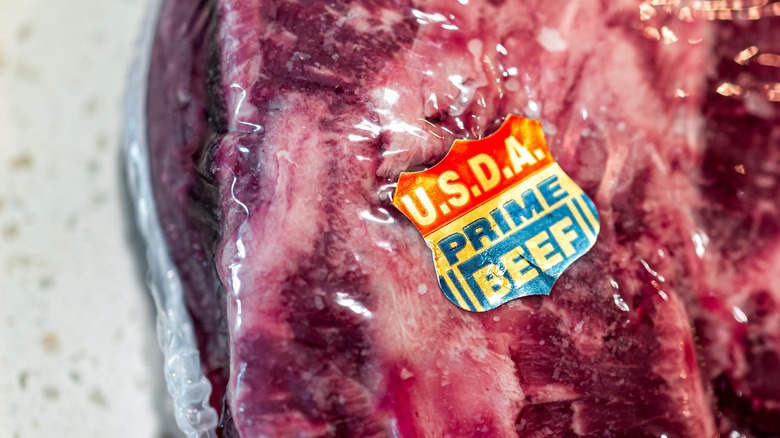The Labeling Loophole Restaurants Use To Trick Your Mind
If you've ever dropped significant money on a nice dinner for a special occasion then you may be familiar with the level of detail that many fine dining establishments use to describe menu items. Words like "angus," "grass-fed," and "organic" are often listed under offerings. Though these menu descriptions inform diners about a restaurant's food, many of them aren't regulated in restaurants, and may not always mean a better product.
A restaurant can tell you on the menu, for example, that its burger is made with angus beef. Per the United States Department of Agriculture (USDA), angus beef has to be made from a cow that has some verifiable Angus breed ancestry. But there's no telling from the "angus" label what the rest of the cow's parentage is, or, more importantly, if the USDA deems it a quality cut of beef. So listing it on a menu doesn't necessarily give the diner more information and potentially tricks them into paying more for a product falsely perceived as high-quality.
What are the FDA and USDA?
The U.S. Food and Drug Administration (FDA) and the USDA develop food laws and standardize production around the country. The USDA regulates meat, poultry, and egg products, while the FDA oversees everything else: produce, condiments, and cosmetics, plus human and veterinary drugs. The FDA is also the government body that manages labeling on packaged goods, and even requires that chain restaurants with more than 20 locations list calorie information on menus.
Every four years, the FDA supplies restaurants and grocery stores with an updated Food Code, full of food safety standards that businesses must abide by. This includes healthy internal temperatures for any kind of food and how to properly clean equipment. But the Food Code only mentions menu labeling a few times (regarding children's menu guidelines and that an FDA inspector can review a restaurant's menu to ensure it properly prepares high-risk items). So if the FDA isn't regulating terms like "prime" and "organic" on menus, who is?
How are restaurant menus regulated?
The USDA's Food Standards and Labeling Policy Book is intended as a guideline to help food manufacturers with labeling meat, poultry, and eggs. Though restaurants need not abide by the book (as it primarily applies to producers), it lays out a few terms and what dining establishments may or may not mean when you see certain words on a menu.
For example, the book states that items not graded by the USDA (like pork) cannot be referenced as USDA-graded. However, pork items can be labeled as "choice" or "prime," as long as those labels don't have a "USDA" in front of them. A menu advertising a prime pork roast doesn't indicate regulated quality, just the restaurant's opinion. Red meat items, however, can only be labeled "choice," "select," or "good" if they have been USDA-graded. The exception to this rule is prime rib (the cut of the cow) which doesn't have to be made with USDA prime grade beef.
Though the FDA and USDA have little say in how restaurants create and label items on their menus, that's not to say that dining establishments lie about their offerings. Many restaurants do actually buy organic products to incorporate into dishes. And restaurants obviously have the freedom to list a hamburger made with grass-fed beef, if that's how they sourced that ingredient. But if you're someone who's continually caught up in the details, ask your server about how the menu is labeled and what exactly it means.



